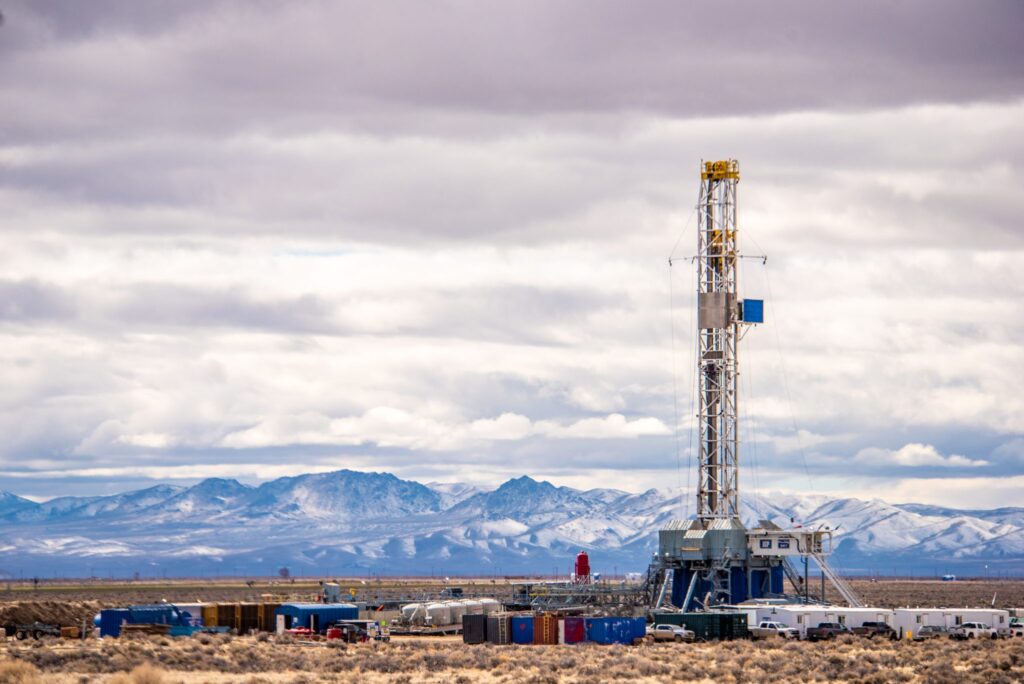 Fervo Energy has announced positive results of a 30-day well test conducted at Project Red, the company’s full-scale EGS pilot project in northern Nevada.
Fervo Energy has announced positive results of a 30-day well test conducted at Project Red, the company’s full-scale EGS pilot project in northern Nevada.The results indicate that the well doublet, connected by a hydraulically fractured reservoir, can support 3.5 MW of electricity production (assuming a supercritical ORC cycle) with a flowrate of 63 L/s at high temperature. Gross power output ranged from 2 to 3.5 MW throughout the test. The flow rate and power output achieved during the test exceed the performance of other historic EGS projects.
The drilling and stimulation phase of the project was completed between January 2022 to March 2023. The well testing phase took place from April to May 2023.
“By applying drilling technology from the oil and gas industry, we have proven that we can produce 24/7 carbon-free energy resources in new geographies across the world. The incredible results we share today are the product of many years of dedicated work and commitment from Fervo employees and industry partners, especially Google,” said Tim Latimer, Fervo Energy CEO and Co-Founder.
Fervo’s results from Project Red support the findings of the DOE Enhanced Geothermal Earthshot and show that geothermal energy could supply over 20% of U.S. power needs and compliment wind and solar to reach a fully decarbonized grid.
“Power systems modeling confirms that geothermal can be a critical player in a fully decarbonized grid. Fervo’s successful commercial pilot takes next-generation geothermal technology from the realm of models into the real world and starts us on a path to unlock geothermal’s full potential,” said Jesse Jenkins, Assistant Professor and leader of the Zero-carbon Energy systems Research and Optimization (ZERO) lab at Princeton University.
Related to this announcement, Fervo has published a pre-print of a research article that provides more technical details about the project and its results. The pre-print can be accessed(https://doi.org/10.31223/X52X0B) but has not yet been peer-reviewed.
Selection of project site
The project site is located adjacent to the Blue Mountain Geothermal power plant located in northern Nevada. The stratigraphy of the site is characterized by Miocene to present basin-fill deposits overlying Mesozoic phyllites with multiple intrusions of igneous dikes and sills, interpreted to be Mesozoic and Tertiary in age. The Blue Mountain geothermal system is associated with a displacement transfer zone and deep circulation is primarily controlled by N to NE-striking normal faults intersected by a NW-striking dextral-normal fault system.
The drilling is located south of the known upflow and outflow zones of the Blue Mountain geothermal system. Several wells have been drilled in this area, exhibiting conductive temperature conditions and a recognized lack of deep permeability. These conditions made it the ideal testbed for Fervo’s proposed EGS project.
Well design and drilling
Three wells were drilled by Fervo – a vertical monitoring well (Monitoring Well 73-22), Injection Well 34A-22, and Production Well 34-22. The injection and production wells comprise the first-of-its-kind EGS horizontal doublet well system. The lateral sections of the wells were drilled with 9 7/8″ hole size, completed with 7″ casing, extended approximately 3,250 feet (990 meters) horizontally, and reached a maximum measured temperature of 376 °F (190 °C). The laterals of the were landed at a true vertical depth of approximately 7,700 feet (2347 meters).
Horizontal drilling was considered to improve the economics of a geothermal project by providing greater access to the
target reservoir volume, more consistent flow rates, more uniform flow distribution throughout the reservoir volume, and greater total heat transfer surface area. Horizontal well design also offers many engineering design decisions, allowing it to adapt to different geological settings and locations.